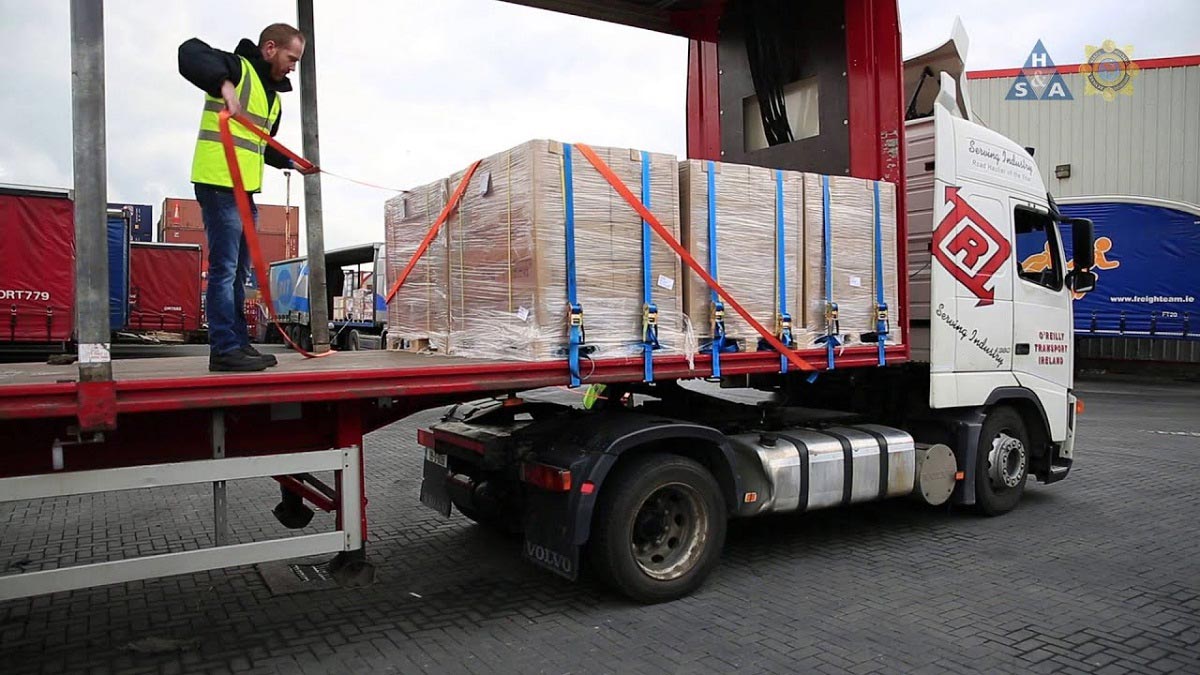Trucking Load Securement Training Guide
One of the most important and fundamental parts of trucking is making sure that your cargo reaches its destination safely.
Proper load securement techniques can be the difference between a simple delivery and disaster. For that reason, every driver should be familiar with the rules, regulations and techniques as outlined by the FMCSA.
Understanding Load Securement
Load securement is about using different methods and tools to keep cargo from shifting or falling during transportation. This not only protects the goods being transported but also ensures the safety of everyone involved. Different types of cargo call for specific securement techniques, and following safety standards and regulations is crucial.
Types of Cargo and How to Secure Them
- Palletized Cargo:
- Use straps, chains, or webbing to tie the cargo to the pallet.
- Employ edge protectors to prevent straps from damaging the cargo.
- Make sure the weight is evenly distributed on the pallet to avoid imbalance during transit.
- Bulk Cargo (e.g., gravel, sand):
- Cover loose materials with tarps or netting to prevent spillage.
- Use appropriate tie-downs and tensioning methods to secure the load.
- Regularly check and tighten securements during transit.
- Heavy Machinery:
- Use special equipment like chains, binders, or ratchet straps.
- Ensure the machinery is centered and balanced on the trailer.
- Use engineering controls, such as custom cradles, for irregularly shaped loads.
- Cylindrical Objects (e.g., pipes, rolls):
- Prevent rolling using friction mats.
- Use straps or chains over the top to prevent lateral movement.
- Secure multiple cylindrical objects together to create a stable unit.
- Vehicles (e.g., cars, trucks):
- Secure vehicles with wheel straps or tire nets.
- Add extra straps or chains over the body of the vehicle.
- Use soft ties and padding to protect vehicles from scratches and dents.
Ensuring Compliance with Safety Standards and Regulations
- Federal Motor Carrier Safety Administration (FMCSA):
- Learn and follow the FMCSA regulations on cargo securement in §Part 393, Subpart I of the Federal Motor Carrier Safety Regulations (FMCSR).
- Stay updated on any changes to the regulations for ongoing compliance.
- North American Cargo Securement Standard:
- Understand the guidelines for securement outlined in the North American Cargo Securement Standard.
- Adhere to the specific requirements for different commodities, such as general cargo, logs, and metal coils.
- Inspecting and Maintaining Equipment:
- Regularly check tie-downs, straps, chains, and other securement devices for wear or damage.
- Replace damaged or worn equipment promptly to maintain secure load transport.
- Driver Training and Education:
- Provide comprehensive training to drivers on proper load securement techniques.
- Emphasize the importance of compliance with safety regulations and the potential consequences of inadequate securement.
Related Articles:


